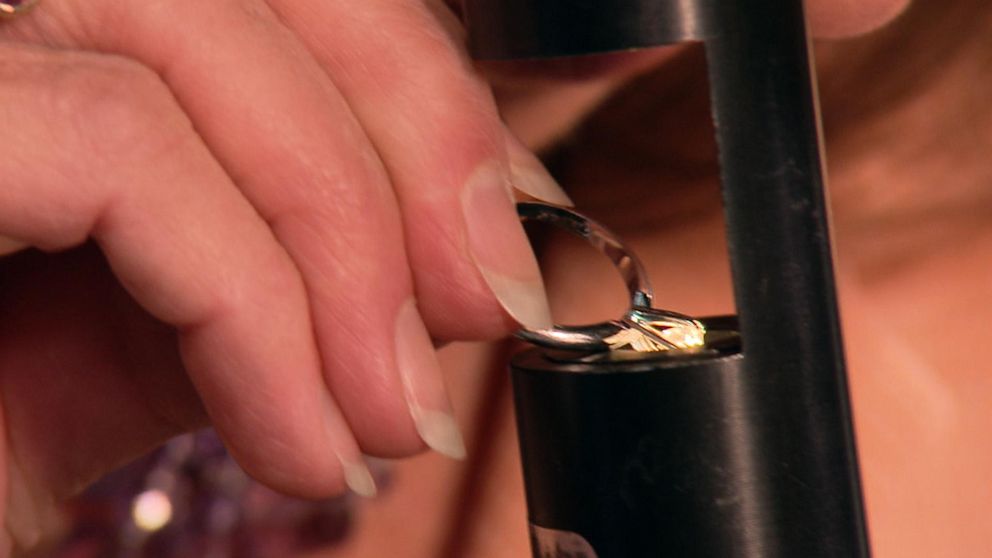Diamonds Decoded: Expert's Guide to Buying an Engagement Ring
Make sure you're buying the best ring for your budget.

July 10, 2013 -- intro: The average engagement ring in America costs around $5,431, according to theknot.com, and while budgets vary from one couple to another, this piece of jewelry typically is an investment in more ways than one.
Before you make that deposit and pop the question, gem and jewelry expert Antoinette Matlins wants to make sure you're buying the best ring for your budget. Matlins is the author of "Diamonds: The Antoinette Matlins Buying Guide" and "Engagement & Wedding Rings: The Definitive Buying Guide for People in Love" among other titles.
Her advice:
quicklist:title: Educate Yourselftext: Matlins suggests prepping yourself on the basics. The four factors judged to determine the quality and rarity of the stone are color, clarity, carat, and cut, also known as the four C's.
Color:
The color of a diamond is graded on an alphabetical scale that begins with the letter D and continues through the rest of the alphabet all the way to Z. Matlins equates D, the rarest color grade, to looking through "crystal clear spring water." Each grade closer to Z is a little more tinted and has a profound effect on cost because of the rarity of colors.
Clarity:
Clarity assesses the internal characteristics of the diamond as it formed in nature. This C factor is graded on a 10-grade scale and also impacts the diamond's rarity and value.
Carat:
Don't be fooled -- a carat is determined by the diamond's weight, not its size. So how does a 10-carat diamond stack up against a five-carat rock? Matlins notes that "a 10-carat diamond, for example, doesn't look twice as large as a five-carat diamond because you've got weight in the top as well as the bottom."
Cut:
"The cutting is everything that goes into fashioning that diamond from the rough to the beautiful, fiery, sparkly gem you see," says Matlins. The cut of the diamond directly affects how light moves through the stone. According to Matlins, differences in cutting can affect the value as much as 40 percent, assuming everything else is identical in the stone.
quicklist:title: Get it in Writing text: Once you have the four C's down, make sure whomever you are buying your jewelry from is willing to guarantee each rating and assessment of the diamond in writing, on their own stationary. This step helps to protect the buyer if they were misrepresented on the facts they were sold on.
quicklist:title: Not All Reports and Certificates Are Equaltext: Matlins advises prospective buyers to look out for one particular grading report -- a Gemological Institute of America (GIA) diamond grading report. She says it is the most respected lab worldwide for its high standards, and that the finest diamonds are accompanied by this certification. She notes that the GIA does not issue reports for stones that are clarity enhanced in a manner that is not permanent, which includes clarity enhanced diamonds through fracture filling.
quicklist:title: Get an Expert in Your Cornertext: After you make your purchase, it is important to find an appraiser that is an accredited gemologist appraiser to verify everything you have been told about the diamond is as represented. Matlins points to the American Society of Appraisers and the American Gem Society as two trusted organizations that certify gemologist appraisers and require retesting every couple of years to ensure practitioners are up to date on latest technologies, as well as ethical standards. Matlins says you can't just walk in the door to see an accredited appraiser. "You have to set an appointment with a legitimate appraiser," she says.




